
Chinese Incursions In South China Sea Heightens Tension – Analysis
Latest
In view of its massive military muscle and economic power that China has accumulated in the recent decades emboldens it to ignore and violate the sensitivities of other small claimants even though it is against the established global rules. The power of intimidation is so huge that no single small Asian nation is in a position to challenge the might of China. Viet Nam is the only country backed by its past experience of fighting against the colonisers such as France, the US and China and emerging winner is confident to take China head on if it does not end its violation of sovereignty in the South China Sea, which it call as East Sea.
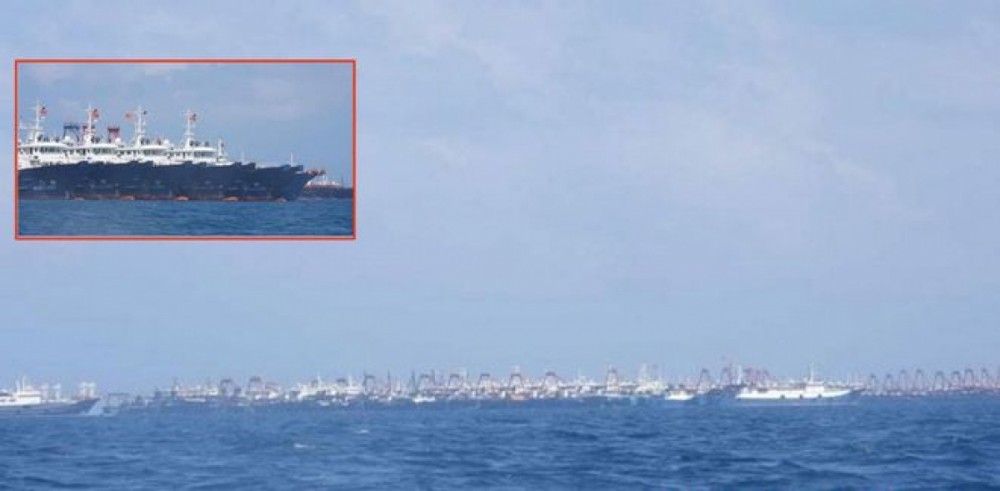 |
| Chinese ships have been operating illegally at the Bai Ba Dau (Whitsun Reef) in Viet Nam’s Truong Sa (Spratly) archipelago. (Source: NTF-WPS) |
In recent times, Chinese ships have been operating illegally at the Bai Ba Dau (Whitsun Reef) in Viet Nam’s Truong Sa (Spratly) archipelago. Viet Nam’s claims to affirm its sovereignty are backed by historical evidence and as per international law. Viet Nam is a signatory to the 1982 UN Convention on the Law of the Sea (UNCLOS), based on which as a coastal country it is entitled to sovereignty, sovereign rights and jurisdiction over waters and therefore legally feels that Chinese ships operating within the territorial waters of Sinh Ton Dong island in the Spratly runs counter to the spirit and content of the UNCLOS’s stipulation on the operation of foreign vessels in the territorial waters of coastal nations. Such Chinese activities run counter to the spirit and content of the Declaration on the Conduct of Parties in the East Sea (DOC). This also comes on the way of negotiations between the ASEAN and China on a Code of Conduct of Parties in the East Sea (COC).
Therefore, backed by mutually agreed law, Viet Nam legally is empowered to demand that “China respects Viet Nam’s sovereignty, implement the UNCLOS with good will, seriously comply with the DOC, especially the obligation of self-restraint so as to not complicate the situation and to create a favourable environment for the COC negotiation, thus contributing to the maintenance of peace, security, stability and legal order at sea in the region”.
At the recently held 13th Party Congress resolution, details of ‘new perceptions, new thoughts on Viet Nam’s defense’ was adopted. This was explained by Politburo member, Chief of Staff of the Viet Nam People’s Party, and Deputy Minister of Defence Phan Van Giang in a presentation at the national conference of the Congress. In view of the continued threat from and bullying by China, Viet Nam gives priorities on building the nation and defending the country with equal measure and priority. Viet Nam has learnt this hard lesson through different periods of its history when it had to deal with great powers such as France, the US and China who came as invaders and colonised the country. The gusty resistance of the Vietnamese people forced these colonisers finally to leave the country. This experience provides enough confidence to the modern Viet Nam to deal with China to militarily fight if the latter ever crosses the red line and forces Viet Nam to exhaust all its patience. In view of this impending danger, at the moment Viet Nam is preparing to beef up its defences and mobilising the people’s strength and support as the best way to defend the country. As Viet Nam leapfrogs to a moderately developed country, the digital industry in the on-going fourth industrial revolution shall not only contribute to economic activities but also strengthen the defence sector as well.
Moreover, the strategic environment in the region has undergone perceptible change, which compels Viet Nam to make adjustment in its defence and foreign relations with countries friendly to it. Ties with India and Japan are examples. The development of modern weapons and military technical equipment shapes Viet Nam’s new orientation in its own defence apparatus and prepares itself to face any modern wars, if they erupt. The looming threat from China is not the only single threat that is identified; there are threats coming from other sectors too: cyber war, non-traditional security factors, such as terrorism, natural disasters and epidemics such as the current Covid-19. Like other countries, Viet Nam too has prioritised to be prepared as well to face such future challenges.
How to cope with the strategic competition among major powers in the Indo-Pacific region centring in the South China Sea matrix and the potential volatility involved in this matrix is another bother. When issues such as stability, freedom of security, safety of navigation and over-flight in the East Sea pose challenges with potential risks of conflicts, defending or being prepared to defend the country when such a situation develops ought to be a nation’s priority concern. Viet Nam’s policies are therefore geared on that direction. When territorial issue is involved, the danger becomes big as colonising nations through history have used sea to take control of many countries in the past. There exists now international law signed by many countries prescribing how responsible nations should conduct themselves. The problem arises when certain country/countries loses/lose respect to such laws. The situation now in the East Sea can be seen in this narrative and Viet Nam’s position needs to be understood. As it transpired from the resolution of the Party Congress, Viet Nam is prepared to defend the country with combined strength based on strategic principles while remaining open to defence-related situations so that it remains proactive in all evolving strategic situations.
Viet Nam is committed to build an elite army by 2025 and a number of modern armed services, arms and forces by 2030. In 1975, Viet Nam had 11 military zones. These were later merged to seven military zones. Viet Nam also streamlined the Capital’s High Command, with each military zone having only one division from its earlier 5-7 divisions. More reforms and modernization in its military structures are underway in the wake of the evolving strategic environment endowing Viet Nam with timely response when needed. With a hostile and intimidating neighbour, Viet Nam has little choice than to focus on strengthening its defence capability.
However, Viet Nam is not alone. Chinese activities in the South China Sea are critically seen by other stakeholders in the region such as India, Australia, Japan, the Philippines and others as well. Even the United States and Canada and France take exception to Beijing’s expansionist policies. By deploying over 200 ships around Sinh Ton island cluster in Viet Nam’s Truong Sa (Spratly) archipelago and also into Philippines waters, China has escalated tensions. Philippines have warned China of hostilities if such incursions are not stopped, it could lead to “unwanted hostilities”. Philippines has made it clear to China that its “sovereignty is non-negotiable” and would not give an inch of its national territory or its EEZ. When the Philippines won the case at The Hague court in 2016, Philippine President Rodrigo Duterte did not press with China, prompting the nationalists to accuse Duterte of gambling with territory in return for elusive Chinese investment. That stance has now changed when over 200 Chinese vessels moved at Whitsun Reef, a traditional fishing ground for the Philippines. Voicing its concern and to reassure its ally, the United States issued a statement on 28 March stating that it would stand up with its allies to uphold rules-based international order. The statement reminded China that an armed attack on the Philippines armed forces, public vessels, or aircraft in the Pacific, including the South China Sea, could trigger under its obligation under the US-Philippines Mutual Defence Treaty to intervene. The US therefore reminds Beijing that it should honour the 2016 tribunal award under the Law of the Sea Convention, which is final and binding on all parties.
Similarly, Japan’s Ambassador to the Philippines, Koshikawa Kazuhiko, also observed that the East Sea issues are directly related to peace and stability and a concern for all. “Japan strongly opposes any action that heightens tensions. We support the enforcement of rule of law in the sea and work with the int’l community to protect the free, open, and peaceful seas,” he added. Expressing similar concern, Australia’s Ambassador to the Philippines, Steven Robinson, remarked that Australia remains concerned about destabilising actions that could provoke escalation in the region. He reminded the stakeholders that Australia supports an Indo-Pacific region which is secure, open and inclusive, and that the South China Sea – a crucial international waterway – is governed by international rules and norms, particularly UNCLOS. India too in numerous occasions has aired similar views.
On its part, Viet Nam has remained vocal about its robust response if China crosses the red line and expects Beijing to stop its illegal activities and not violate its sovereignty and respect the UNCLOS’s regulations on the operation of foreign vessels in the territorial waters of coastal nations. Unless China changes its expansionist designs, things could get messy and turn ugly. This would close the unfavourable situation for negotiations between the stakeholders and China and prepare the ground for a regional conflagration. Before it gets too late, China must change course and talk with all the adversarial nations who have been facing its wrath.
On 16-17 March at the 3rd ASEAN Regional Forum (ARF) online workshop organised by Vietnamese Ministry of Foreign Affairs, the Ministry of Foreign Affairs and Trade of Australia and the European Commission on strengthening cooperation in law enforcement at sea, international experts warned about escalating tensions and the need for strengthening cooperation in law enforcement at sea. The importance of maintaining and promoting dialogue and cooperation to respond to security challenges in the region, including marine security was stressed. The speaker from Viet Nam reminded that the sea and oceans play an important role for all countries, and that all countries share a common interest in ensuring all waters are peaceful, secure, safe and clean. Countries should continue to cooperate with each other, particularly among law enforcement forces. The workshop underlined the importance of implementing the ARF Declaration on Cooperation between law enforcement agencies at sea as approved by the Ministers of Foreign Affairs in 2016, Viet Nam, together with Australia and the EU.
In view of the volatile situation created because of Chinese activities, the risk of collisions and incidents are high now. There lies the risk of a regional conflagration, which is why new guidelines for the operations of enforcement of sea law enforcement forces are urgently needed to be agreed upon. Thus it transpires, that the stakes are high and the onus to restores order clearly lie with China, failing which many stakeholders seeking peace and stability shall be compelled to come together to challenge China. China needs to introspect to this possibility and save itself from damaging its own political, economic and strategic interests by revisiting its expansionist policies.
In order to secure peace and stability in the region, China’s activities in South China Sea needs to be monitored continuously so that China does not violate any international rules. As Quad members, India, the US, Japan and Australia need to raise their diplomatic profile towards this objective. India’s cooperation and matching of interests in a host of issues are given. Same is the case with Japan. Since Viet Nam is determined to protect its land in the South China Sea by all means from the Chinese incursions, it needs support from the Quad members. Viet Nam is the chair in the UNSC in April 2021 and shall continue as a full-year non-permanent member of the body with great responsibilities for the second year. It will have to demonstrate its strategy to discharge its responsibilities in order to contribute to the well-being of the humanity. Viet Nam serves as a non-permanent member of the UNSC in the 2020-2021 tenure and has huge responsibilities to defend international law and the implementation of principles under the UN Charter. In the context of the tensions and risks of potential conflict in the South China Sea, Viet Nam’s main priorities at the UN should be conflict prevention, preventive diplomacy and peaceful settlement of disputes and strengthening the implementation of Chapter VI of the UN Charter. With support from the Quad members, Viet Nam’s hands shall be strengthened in achieving its objectives.
Lately, in response to the changing geopolitics in the Indo-Pacific region, India has also calibrated its strategic approach to meet its own security needs and also for its allies. With this in view it has inked reciprocal military logistic pacts with other three Quad nations as well as France, South Korea and Singapore to enhance its strategic reach in the Indian Ocean and beyond. Viet Nam is also in the loop in this calculus. China needs to be cognizant of such geostrategic churning taking place in response to its own missteps.
* Author, Dr. Rajaram Panda is Senior Fellow at Nehru Memorial Museum and Library, a think tank under the Ministry of Culture, Government of India, Former ICCR India Chair Professor, Reitaku University, Japan, and former Senior Fellow, IDSA, New Delhi. This article was first published on The Eurasia Review.
(The views expressed are personal)
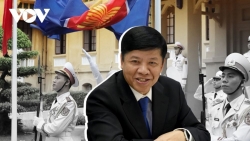
| Vietnam weighs up options in South China Sea dispute: Ambassador Nguyen Quoc Cuong Vietnam has affirmed that it will choose neither the United States nor China with regard to the ongoing dispute in the South China Sea, known ... |
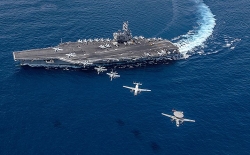
| ASEAN and the South China Sea Code of Conduct: Raising the Aegis of International Law With Vietnam at the helm of ASEAN this year, the grouping has wielded the aegis of international law to ensure that international and regional concerns ... |
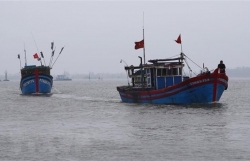
| Australia affirms continued support for freedom of navigation in East Sea Australia will continue to strongly advocate the freedom of navigation through the South China Sea (called the East Sea in Vietnam), Prime Minister Scott Morrison ... |
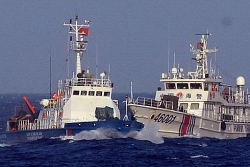
| US rejects China’s unlawful sovereign claims in East Sea The US Department of State on July 13 released a statement, rejecting China’s claims to offshore resources across most of the South China Sea (known ... |
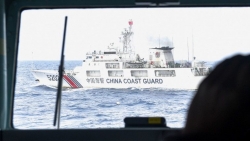
| ASEAN pushes back: The grouping appears to have had enough of China’s bullying in South China Sea ASEAN’s recent statement on the South China Sea issue reflects growing resolve within the grouping to counter China’s expansive maritime claims. |

















